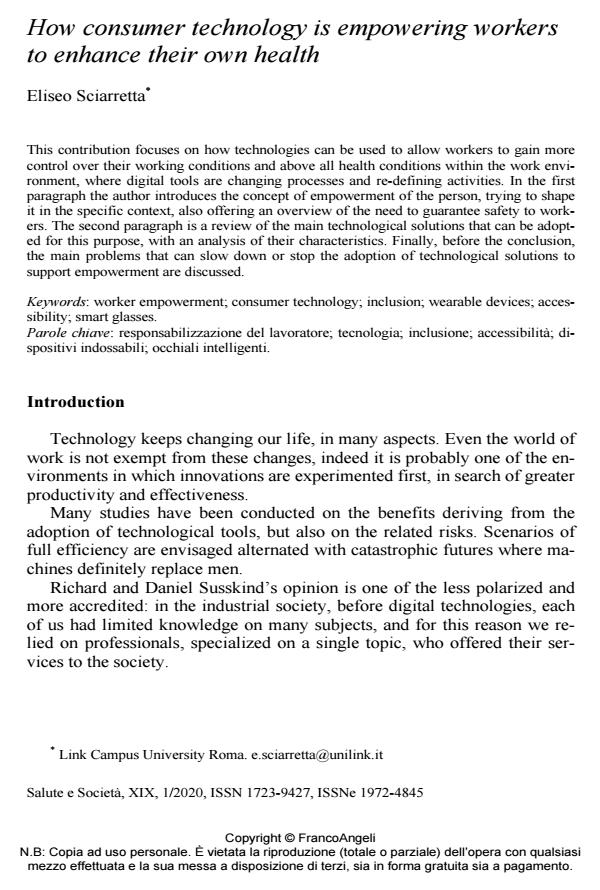How consumer technology is empowering workers to enhance their own health
Journal title SALUTE E SOCIETÀ
Author/s Eliseo Sciarretta
Publishing Year 2020 Issue 2020/1
Language English Pages 14 P. 112-125 File size 158 KB
DOI 10.3280/SES2020-001009
DOI is like a bar code for intellectual property: to have more infomation
click here
Below, you can see the article first page
If you want to buy this article in PDF format, you can do it, following the instructions to buy download credits

FrancoAngeli is member of Publishers International Linking Association, Inc (PILA), a not-for-profit association which run the CrossRef service enabling links to and from online scholarly content.
This contribution focuses on how technologies can be used to allow workers to gain more control over their working conditions and above all health conditions within the work environment, where digital tools are changing processes and redefining activities. In the first par-agraph the author introduces the concept of empowerment of the person, trying to shape it in the specific context, also offering an overview of the need to guarantee safety to workers. The second paragraph is a review of the main technological solutions that can be adopted for this purpose, with an analysis of their characteristics. Finally, before the conclusion, the main problems that can slow down or stop the adoption of technological solutions to support em-powerment are discussed.
Keywords: Worker empowerment; consumer technology; inclusion; wearable devices; accessi-bility; smart glasses.
Eliseo Sciarretta, How consumer technology is empowering workers to enhance their own health in "SALUTE E SOCIETÀ" 1/2020, pp 112-125, DOI: 10.3280/SES2020-001009